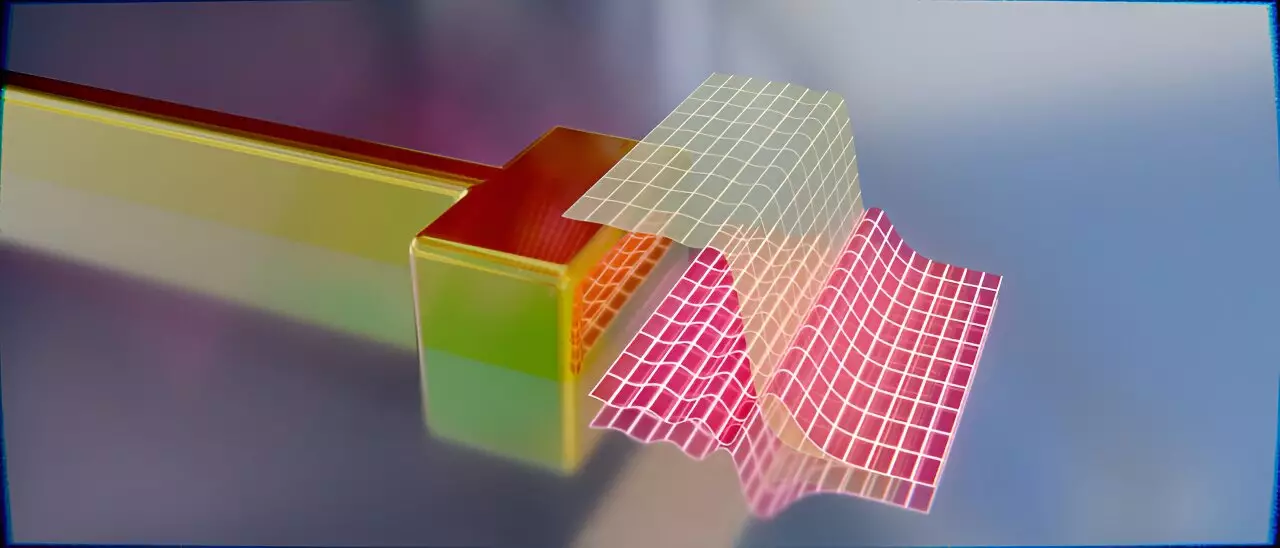In today’s fast-paced technological landscape, traditional electronic computers face formidable limitations when it comes to processing speed. While modern semiconductor technologies have achieved frequencies measured in gigahertz—allowing billions of computations in the blink of an eye—the physical constraints of electron movement in silicon-based chips necessitate innovative alternatives. Enter the realm of photonic computing, where light, rather than electricity, becomes the centerpiece of computation, opening up unprecedented opportunities for speed and efficiency.
Photonic computing stands to revolutionize how data is processed and interpreted. The concept is straightforward yet powerful: instead of relying on the slow-paced movement of electrons through a solid state, utilizing photons can theoretically elevate processing speeds to 1,000 times that of conventional systems. Plasmonic resonators, tiny metallic structures that facilitate interactions between light and electrons, are the vanguard of this technological shift. These resonators manipulate light at the nanoscale, ushering in a new age of computing.
However, significant challenges remain. As Dr. Thorsten Feichtner, a physicist at Julius-Maximilians-Universität Würzburg, points out, the current inability to effectively modulate these resonators limits their practical application. Conventional electronic systems depend on transistors for modulation, but the equivalent mechanism for plasmonic resonators had yet to be realized, stalling advancements in ultrafast light-based technology.
A groundbreaking study led by Dr. Feichtner’s team, in collaboration with Southern Denmark University researchers, marks a significant milestone in overcoming these modulation hurdles. Their research, recently published in *Science Advances*, unveils a method to electrically control the modulation of plasmonic resonators, thereby elevating the discourse around active plasmonics and the potential of faster computing chips.
Rather than modifying the entirety of the resonator, the research team concentrated on the resonator’s surface properties. This finesse was achieved by forming an electrical connection with a singular plasmonic component — a gold nanorod. While the notion is simple in theory, implementing it required advanced fabrication techniques involving helium ion beams and gold nanocrystals. Precision is paramount; it was through the expertise of Professor Bert Hecht and his laboratory that this intricate nanofabrication method was possible.
The experiment highlighted a novel understanding of how surface properties can affect optical attributes. By utilizing mechanisms akin to a Faraday cage—where external electrons on a conductive surface shield interior occupants—the researchers illustrated that electrons on the surface of the nanorod significantly modulate the resonator’s light properties.
In previous models, the behavior of electrons at the boundary was understood in classical terms—akin to water meeting a wall. However, the findings from Würzburg scientists revealed that, near the particle’s edge, electrons “smear” across the interface, creating a gradient much like sand blending with the sea on a beach. This departure from classical physics introduced quantum influence into the conversation regarding plasmonic resonators.
To bridge this gap in understanding, theorists at SDU Odense proposed a semi-classical model that integrates quantum characteristics into a usable surface parameter. By adjusting the response functions of the resonator surface, a new paradigm emerges, interlinking classical mechanics with quantum phenomena. This model allows for more accurate predictions of the plasmonic behavior observed in their experiments.
As the researchers delve deeper into these emerging dynamics, the implications extend beyond faster computing. The ability to manipulate surface electrons opens avenues for improved optical modulators, promising applications in telecommunications, data processing, and beyond. Furthermore, understanding the role of surface electrons could lead to breakthroughs in catalytic processes, which are crucial for energy conversion and storage technologies.
With this research, it becomes possible to deliberately design new antennas, enhancing or suppressing specific quantum effects. The pursuit of such advancements will propel our technological capabilities forward, potentially transforming industries and reshaping our approach to computing at its core.
The transition from electron-based to photon-based computing represents a watershed moment in technology. The WUrzburg team’s pivotal advancements in plasmonic resonator modulation not only spotlight the quantum realm’s rich potential but also lay the groundwork for the next generation of high-speed computing. As more breakthroughs emerge, the dream of instant, powerful computation may soon be within our grasp, establishing a new benchmark for technological progress.


Leave a Reply